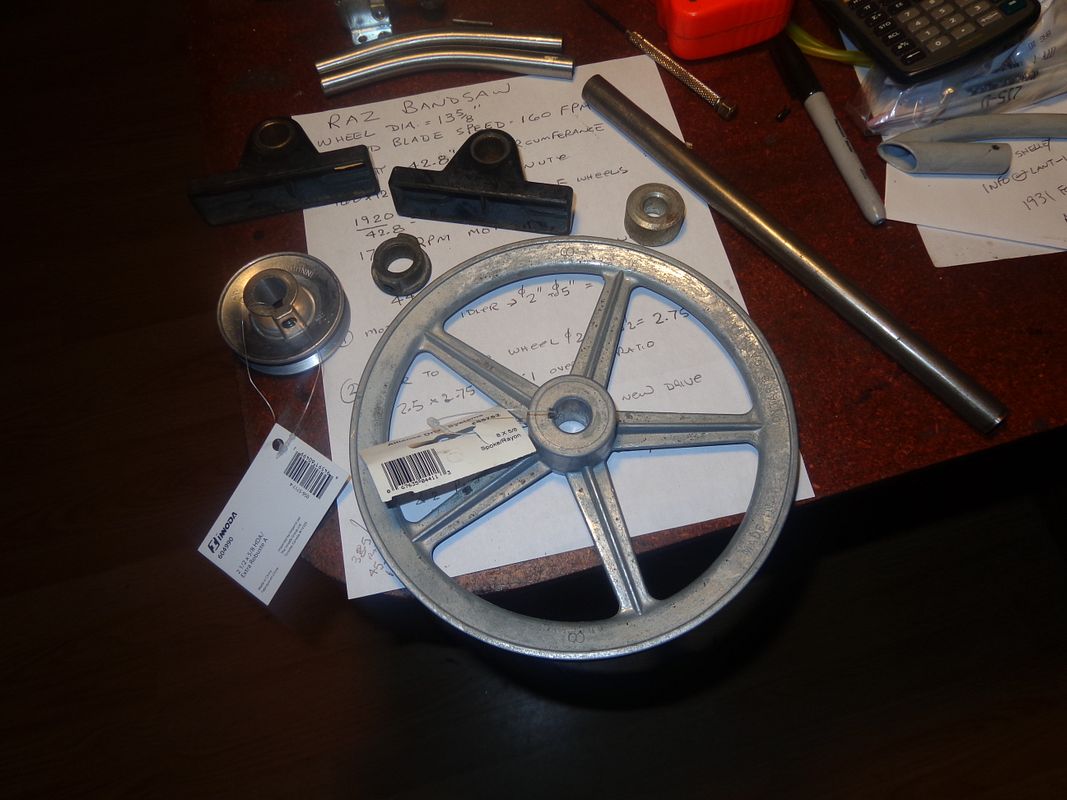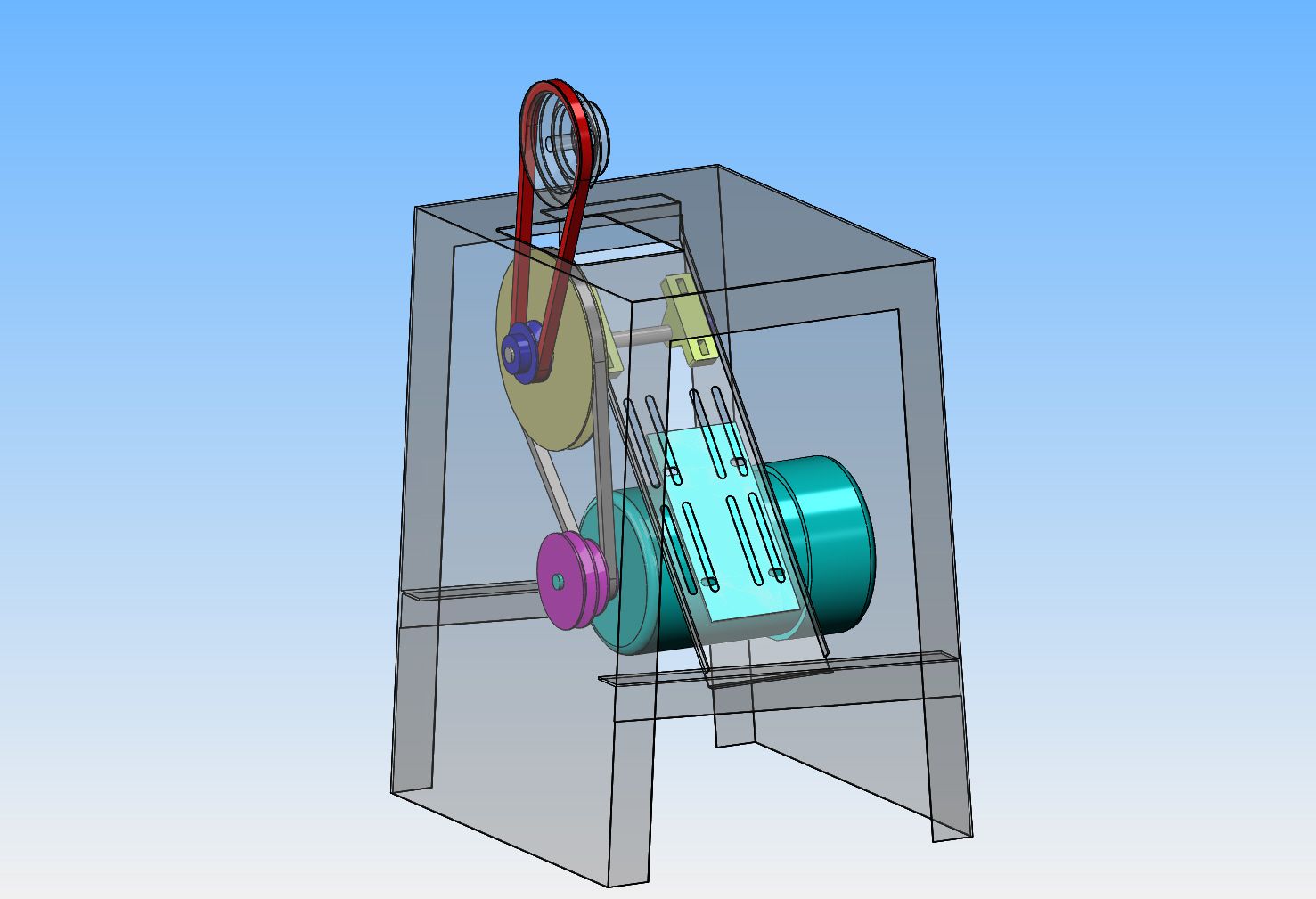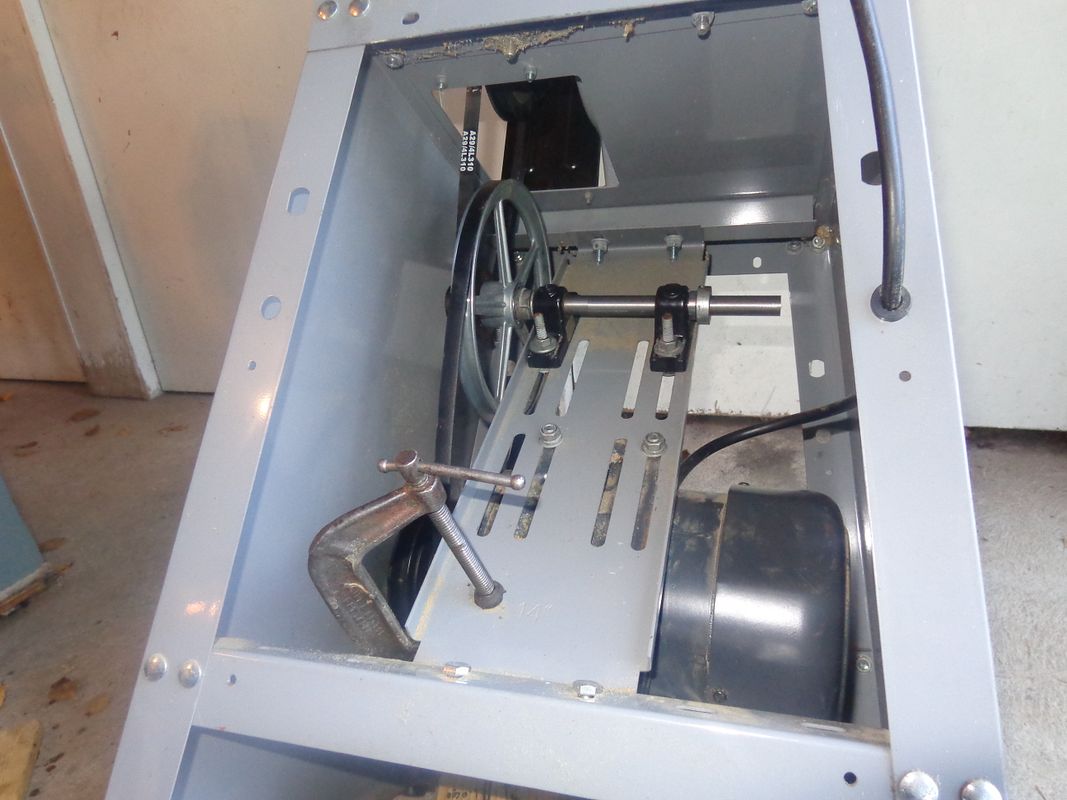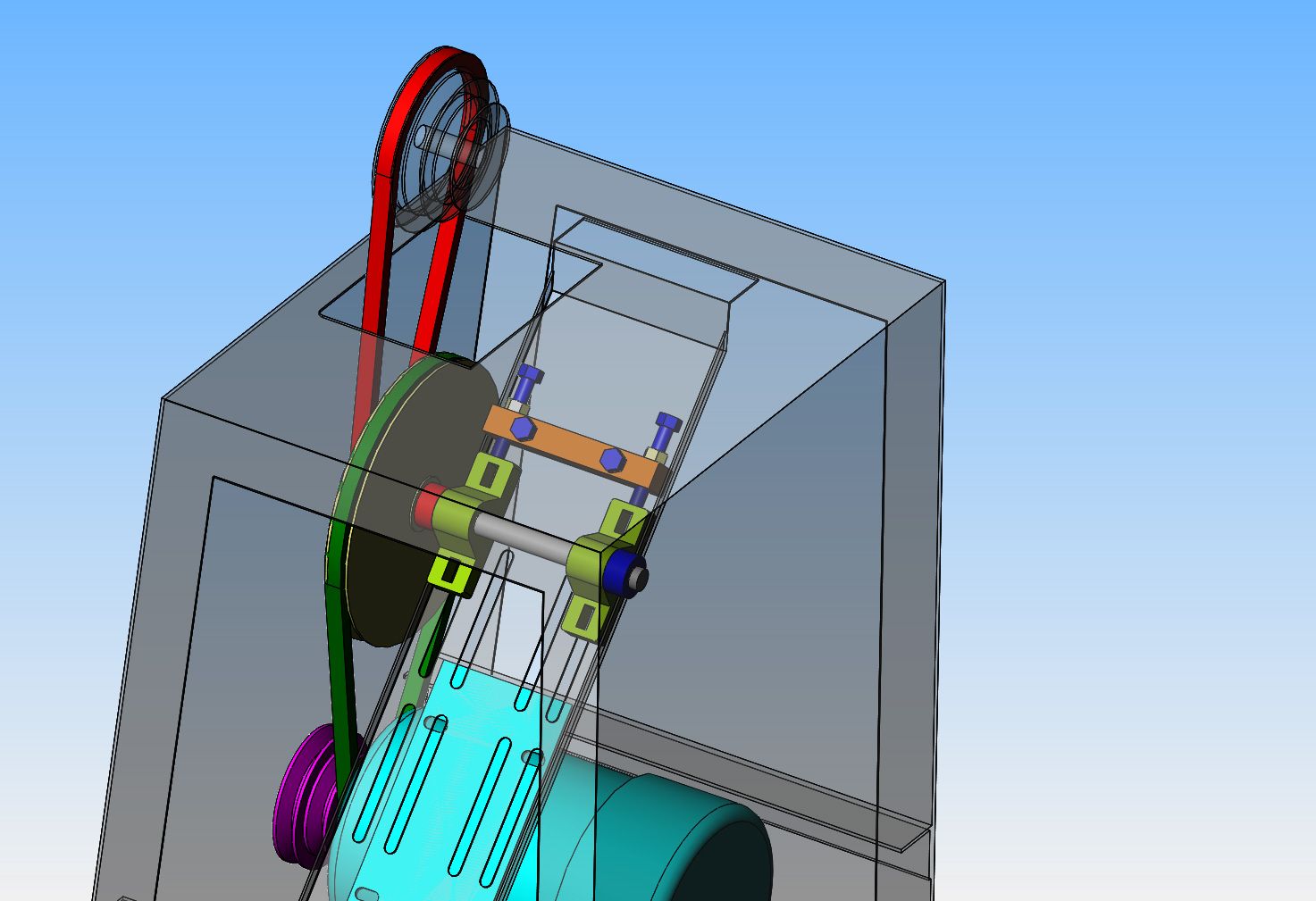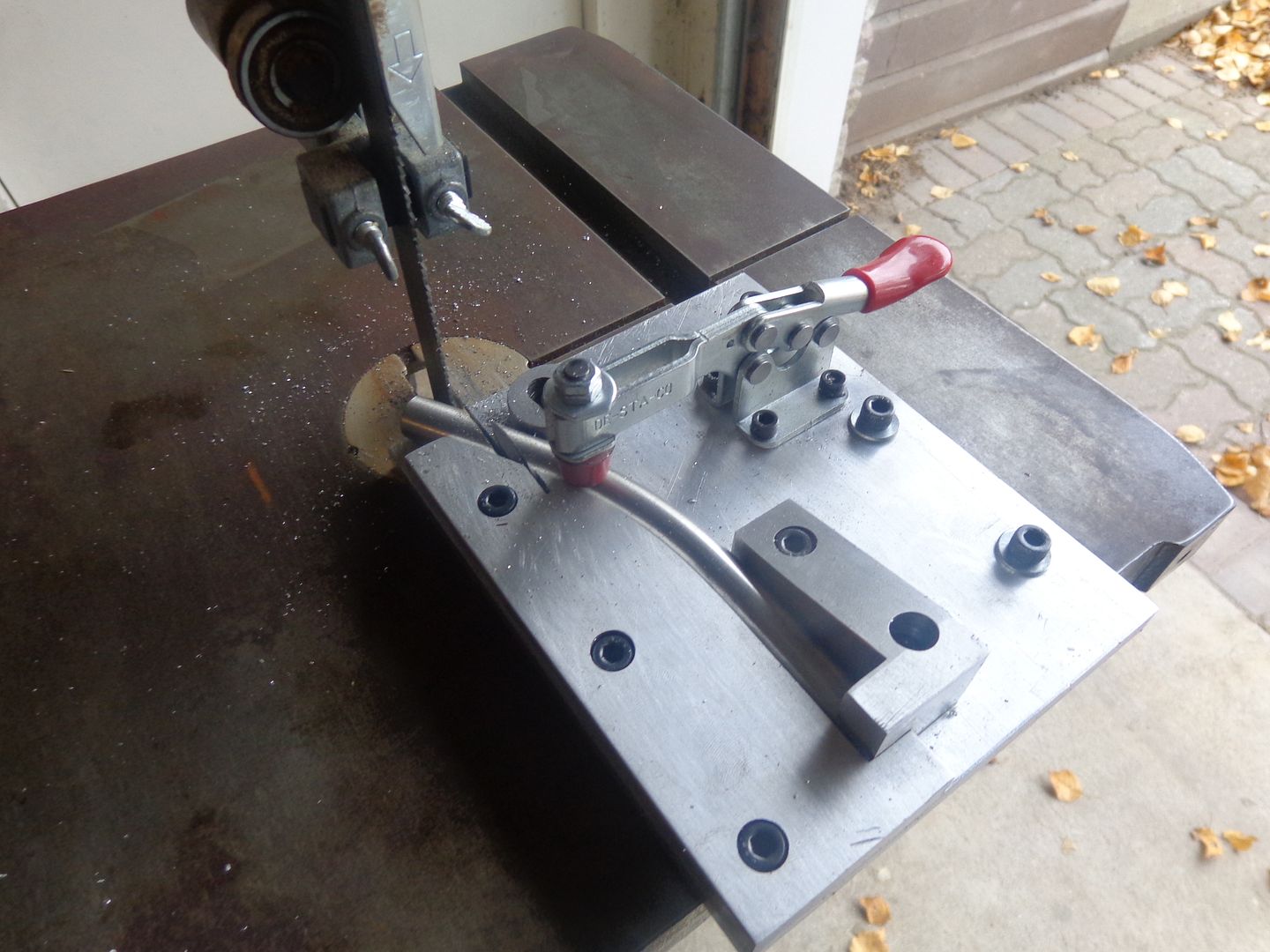I don't know of anyone who enjoys much time on the end of a hacksaw. You can buy a self feeding pivoting horizontal bandsaw for about $500, but they leave a lot to be desired in terms of having a decent cutting table to work on. On the other hand, woodcutting bandsaws go for less than $200 in the local "buy and sell" adds. Trouble is, they commonly travel at a blade speed of 1000 foot per minute, which is fine for wood or aluminum, but far too fast to cut steel or iron with. The "ideal" speed in feet per minute for cutting steel is 100 to 150 fpm blade speed. I have a customer who has asked me to modify a bandsaw for him, and since I am just beginning the project, I thought I would post a "step by step" of how I do it. The motor commonly found on these bandsaws is 1/2 horsepower 1750 rpm. That will work fine, as we are going to gear the blade speed down, which will give us a much higher torque at the lower band wheel. The saw pictured here is a typical 14" saw, and I do not recommend going to anything with a smaller diameter wheel. The reason for that is that metal cutting blades are wider and thicker than wood cutting blades, and they don't like the tighter radius of a smaller diameter wheel. These saws commonly have an idler shaft between the motor and the lower wheel to get the speed reduced to the 1000 fpm area. I will be adding a second "jackshaft" to reduce the blade speed to about 17% of that. The current woodcutting blade is 3/8" wide by .020" thick. The new metal cutting blade will be 3/4" x 0.040". It will be a "bi-metallic" blade, and no, it won't cut curves--at least not the kind that people think of when they hear "bandsaw".
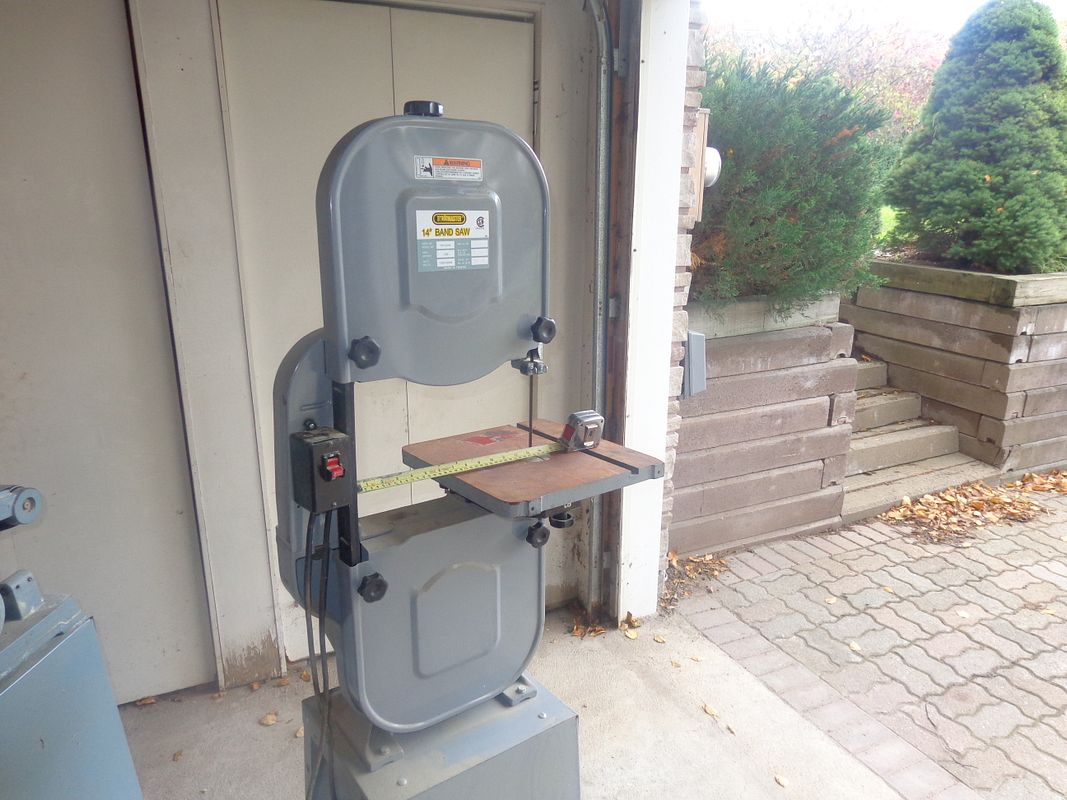
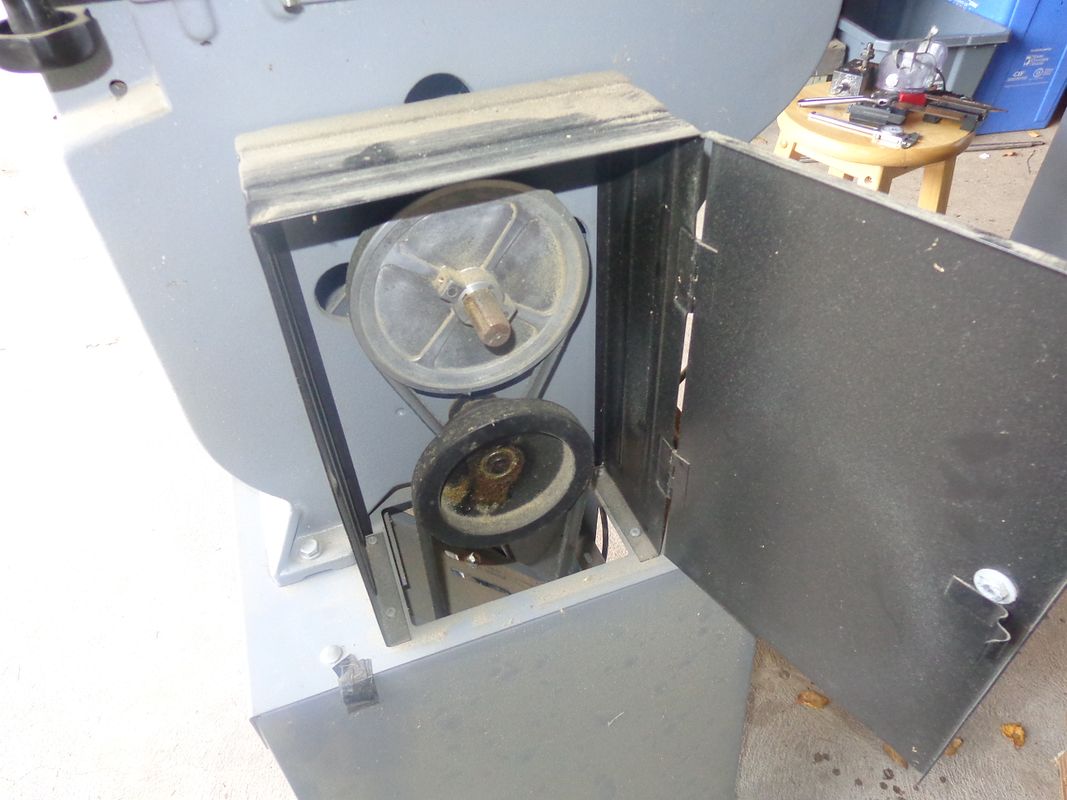
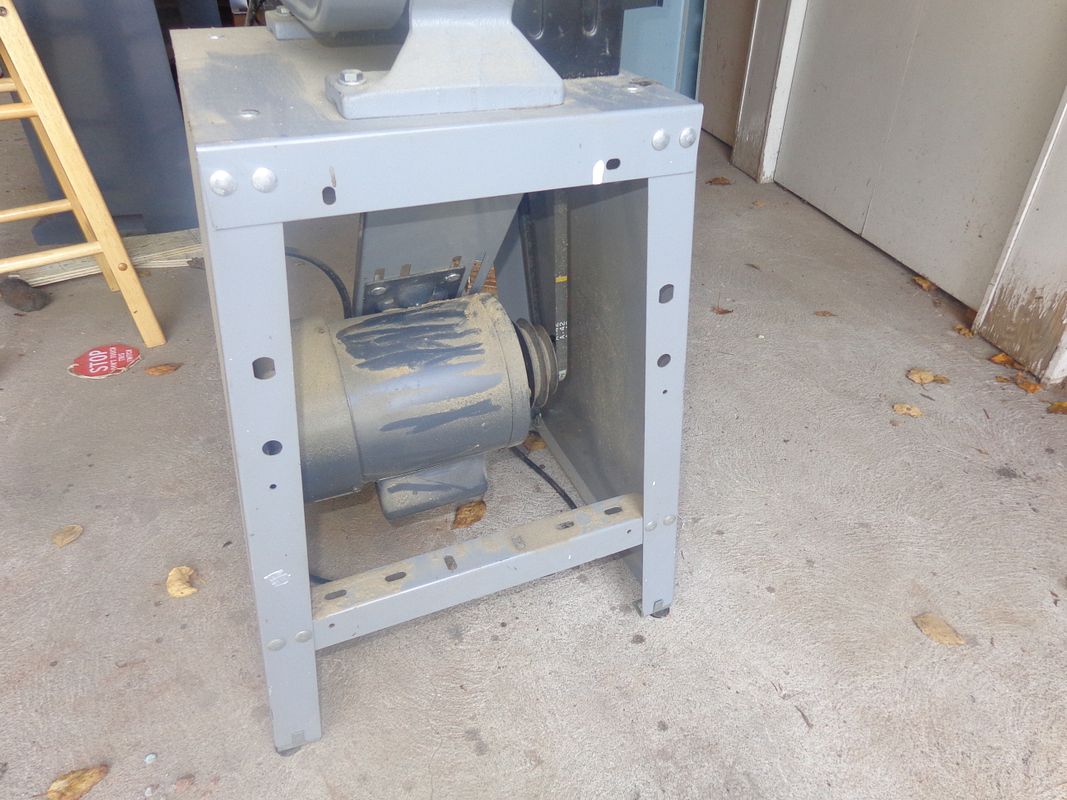



Last edited:





